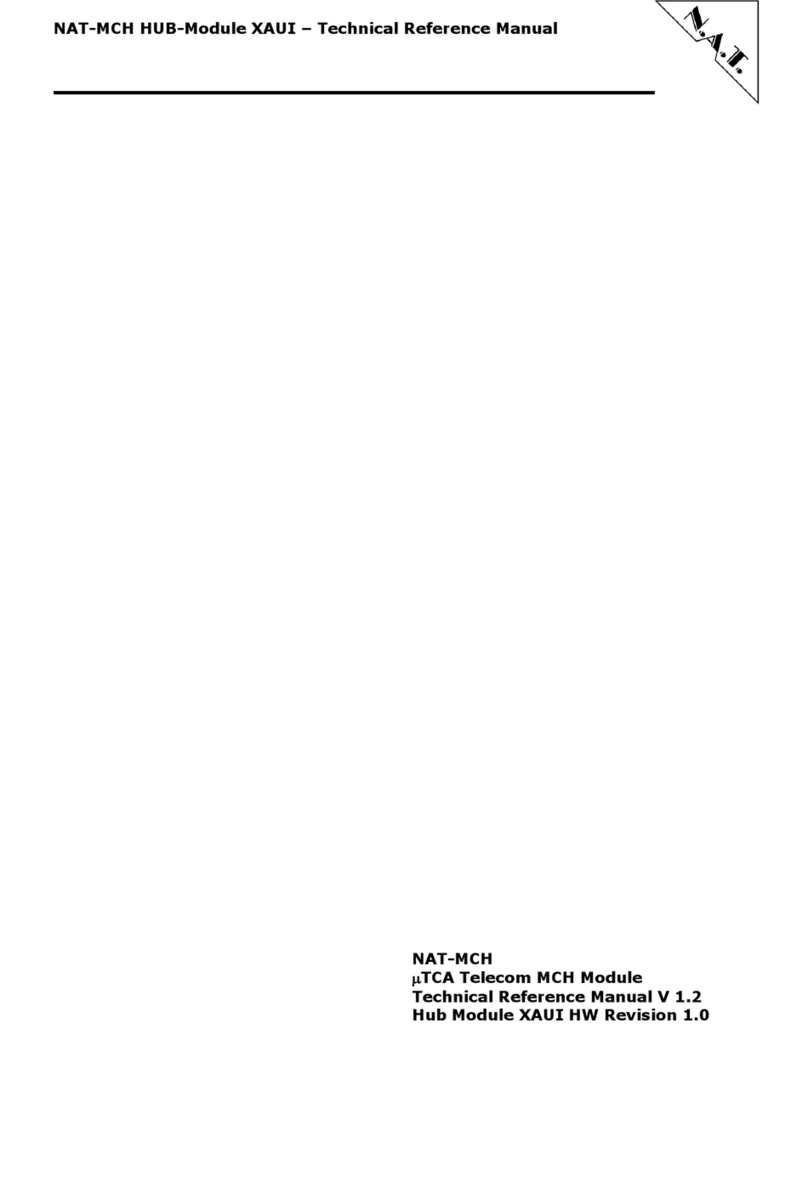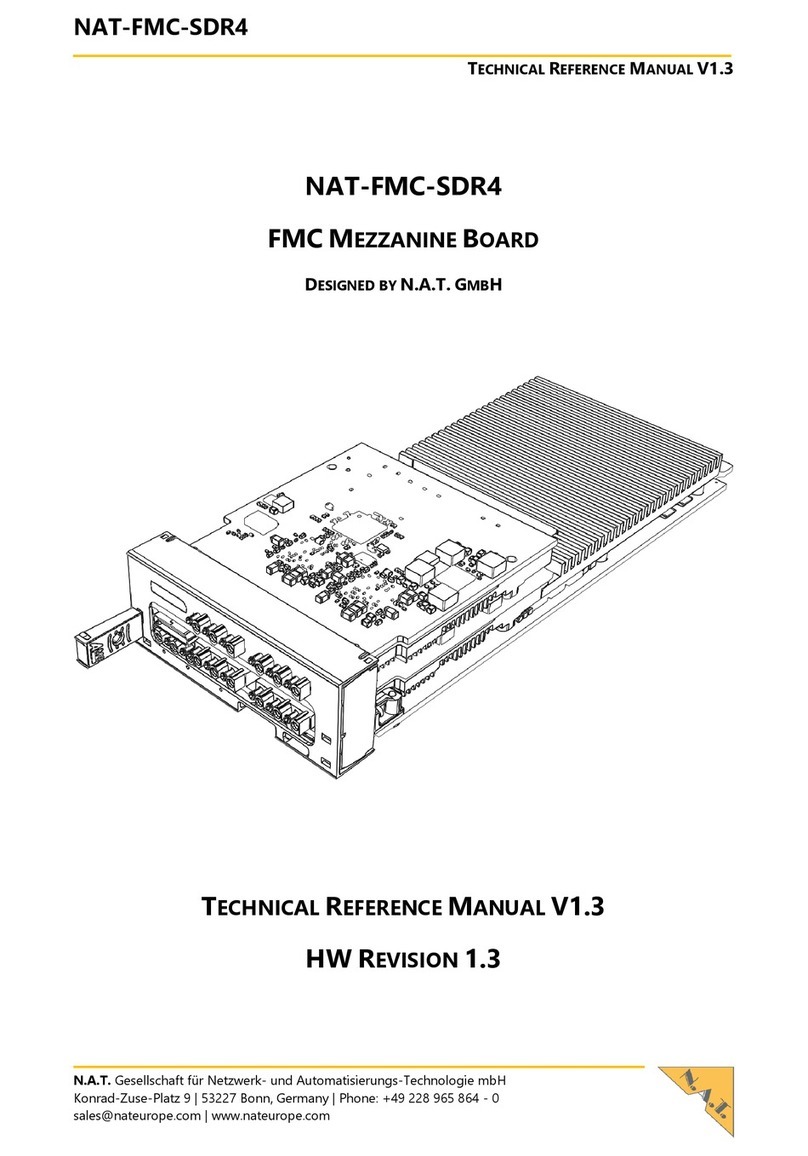
NAT-MCH Clock-PCB – Technical Reference Manual
Version 1.4
© N.A.T. GmbH 6
List of Tables
Table 1: List of used Abbreviations .....................................................................................8
Table 2: NAT-MCH CLK Module Features........................................................................9
Table 3: MCH Connector CON1........................................................................................24
Table 4: Connector to Basic-PCB CON2...........................................................................26
Table 5: Connector to Hub-PCB CON3.............................................................................27
Table 6: Altera FPGA Programming Port..........................................................................27
Table 7: Board Identifier Register......................................................................................29
Table 8: PCB Revision Register.........................................................................................29
Table 9: FW_VERSION Register......................................................................................29
Table 10: FPGA Revision Register......................................................................................30
Table 11: REF0_SEL Register.............................................................................................31
Table 12: REF0_SEL - Register Bits ...................................................................................31
Table 13: REF1_SEL Register.............................................................................................32
Table 14: REF1_SEL - Register Bits ...................................................................................32
Table 15: SRC_SEL1 Register.............................................................................................33
Table 16: SRC_SEL1 - Register Bits...................................................................................33
Table 17: SRC_SEL2 Register.............................................................................................34
Table 18: SRC_SEL2 - Register Bits...................................................................................34
Table 19: SRC_SEL3 Register.............................................................................................35
Table 20: SRC_SEL3 - Register Bits...................................................................................35
Table 21: SRC_SEL_CLK1_UD Register...........................................................................36
Table 22: SRC_SEL_CLK1_UD - Register Bits .................................................................36
Table 23: SRC_SEL_CLK3_UD Register...........................................................................37
Table 24: SRC_SEL_CLK3_UD - Register Bits .................................................................37
Table 25: TRANSC_CTL1 Register....................................................................................38
Table 26: TRANSC_CTL1 - Register Bits ..........................................................................38
Table 27: TRANSC_CTL2 Register....................................................................................39
Table 28: TRANSC_CTL2 - Register Bits ..........................................................................39
Table 29: TRANSC_CTL3 Register....................................................................................40
Table 30: TRANSC_CTL3 - Register Bits ..........................................................................40
Table 31: TRANSC_CTL4 Register....................................................................................41
Table 32: TRANSC_CTL4 - Register Bits ..........................................................................41
Table 33: TRANSC_CTL5 Register....................................................................................42
Table 34: TRANSC_CTL5 - Register Bits ..........................................................................42
Table 35: TRANSC_CTL6 Register....................................................................................43
Table 36: TRANSC_CTL6 - Register Bits ..........................................................................43
Table 37: TRANSC_CTL7 Register....................................................................................44
Table 38: TRANSC_CTL7 - Register Bits ..........................................................................44
Table 39: PLL_CTR1 Register.............................................................................................45
Table 40: PLL_CTR1 – Register Bits..................................................................................45
Table 41: PLL_CTR2 Register.............................................................................................46































